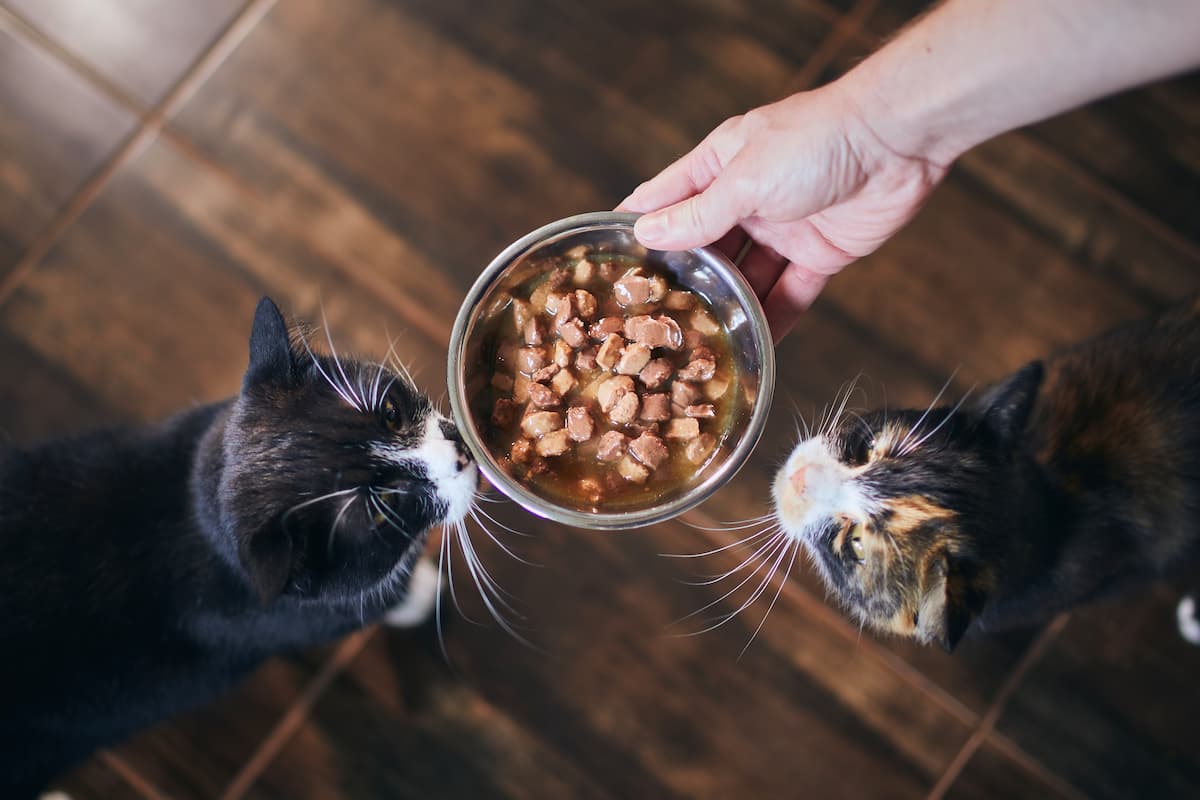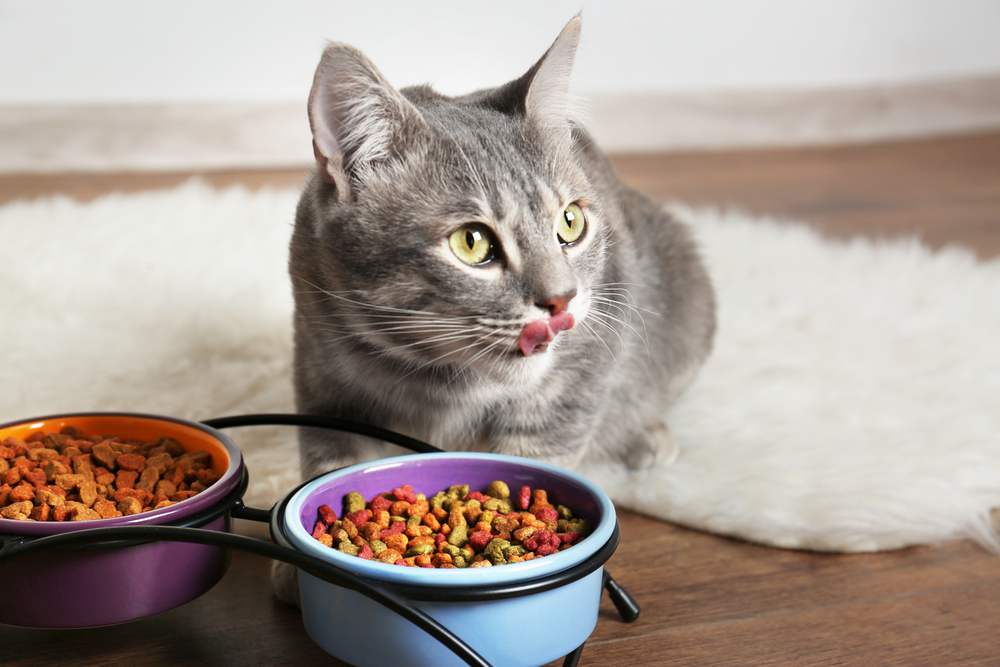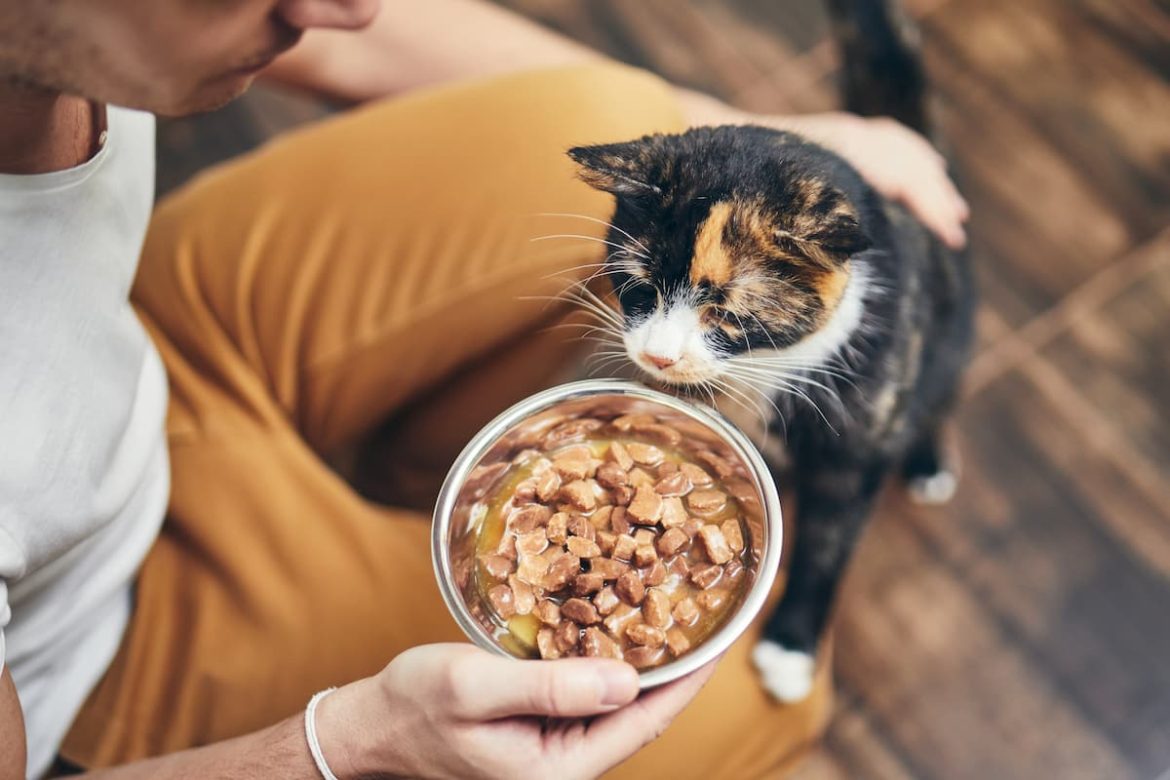Finding the right diet isn’t the easiest thing in the world. For some of us, it can take years! But what about when it comes to our feline friends? Is it as simple as grabbing a few tins of that big-name cat food from the supermarket? Or is there more to perfecting your kitty’s diet?
Well, the answer depends on a few factors. Namely, your cat’s age, size, and weight. So if you’ve got a big senior cat and a petite kitten, their nutritional needs will be completely different. So, you might be wondering, what food should I get my cat?
 Before we get into the nitty-gritty, a little background first. Unlike humans and dogs, who are omnivores and can therefore eat a combination of meat, grains, and vegetables, cats are carnivores. More specifically, they’re what’s called obligate carnivores. Essentially, that means they must eat meat in order to survive. Sorry vegetarians and vegans, that means your furry friend can’t live a meat-free lifestyle like you!
Before we get into the nitty-gritty, a little background first. Unlike humans and dogs, who are omnivores and can therefore eat a combination of meat, grains, and vegetables, cats are carnivores. More specifically, they’re what’s called obligate carnivores. Essentially, that means they must eat meat in order to survive. Sorry vegetarians and vegans, that means your furry friend can’t live a meat-free lifestyle like you!
So, what food should I get my cat?
Because they’re carnivores, cats subsist mostly on a diet of protein and fat – carbohydrates, with the exception of glucose, aren’t essential. Both wet and dry commercial cat food is designed with this in mind, and contains a sufficient amount of taurine (an essential amino acid for cats that can only be obtained through food).
Though the ingredients for cat food made for kittens, adults, and senior cats may be the same, it’s the amount and nutritional makeup that differs. Learning what your kitty needs will keep them healthy and happy, and will make leaving them with a friend or trusted Cat Sitter whenever you’re away much easier.
Kittens
Feeding kittens the appropriate diet is essential, as they experience very fast growth in their first six months of life. Ensure you choose a commercial cat food product formulated specifically for kittens. These products are typically higher in calories, protein, and fat, and contain all the vitamins and nutrients needed for your kitty to grow big and strong.
As for wet vs. dry food, it’s simply a matter of preference. A balance of both is a good way to get your kitty used to different textures, but ultimately, the right food is the one they like best.
Timing of meals is also important at this stage of life, with most experts recommending four to five feeding times each day. Their daily calorie intake (which depends on the size and age of your cat – be sure to read the packaging) should be split evenly among these separate meals. Once they reach around six months of age, you can reduce feeding times to twice per day.
Adult cats
From the age of 12 months, your cat can slowly begin to transition to food formulated for adult cats. Adult cat food tends to be less calorie-dense, but still contains all the essential nutrients they need to live a healthy life.
As your furry friend makes the transition from kitten to adult cat food, it’s important to read the packaging carefully to ensure you aren’t overfeeding them. Kittens eat a lot more than full-grown cats, so slowly ease them into it by feeding them a mixture of both, gradually adding more adult food and less kitten food. Ideally, you’ll also lower the number of times per day that they eat to around twice (morning and night) or even once.
Senior cats
When your cat reaches around eight years of age, their nutritional needs change once again. Just like us, a cat’s metabolism slows down the older they get. Senior kitties can experience mobility issues, teeth problems, and can be more prone to obesity. Choosing senior cat food that’s formulated for their age range (many brands offer food for cats over 7 or 11) will ensure they’re getting enough vitamins and nutrients to support their ageing bones.
You may also find it beneficial to switch to a full-time wet food diet (if they aren’t on one already), as this can be easier for seniors to chew and digest.
 What shouldn’t I feed my cat?
What shouldn’t I feed my cat?
Now that we know what we should be feeding our kitty friends, it’s equally important to know what we absolutely should not feed them. As a general rule, it’s best to stick to a diet of only cat food, boring as it may seem to us humans. Why? Well, aside from cooked meat and fish, most human food is nutritionally unnecessary for cats, and some can be downright dangerous. Though the occasional dropped potato chip won’t do them any harm, here are a few human foods that cats should never eat.
- Onion and garlic. Many of us won’t eat a meal without it, but onion and garlic (whether cooked or uncooked) can lead to anaemia in cats
- Dairy. You might be surprised to learn that, despite the stereotype of milk-loving cats, our feline mates are, by and large, lactose intolerant
- Chocolate. Just like their pupper friends, cats can’t eat chocolate thanks to a lethal chemical called theobromine. Even small amounts can cause heart problems, seizures, and potentially even death
- Grapes and raisins. Scientists are a little stumped at what it is exactly about grapes and raisins that doesn’t agree with cats, but they have been known to cause lethargy, vomiting, diarrhea, and kidney failure
- Bones. When cooked, bones can splinter in cats’ digestive tracts, causing internal damage, and when raw, bones can break teeth, cause blockages, and carry harmful bacteria
- Caffeine. Keep your coffee, tea, and energy drinks far away from Felix – caffeine can cause heart palpitations, panting, muscle spasms, and more
- Alcohol. Like us, cats can become intoxicated, and it doesn’t take much to do so. Even just a tablespoon could give your cat brain or liver damage or cause a coma or even death

